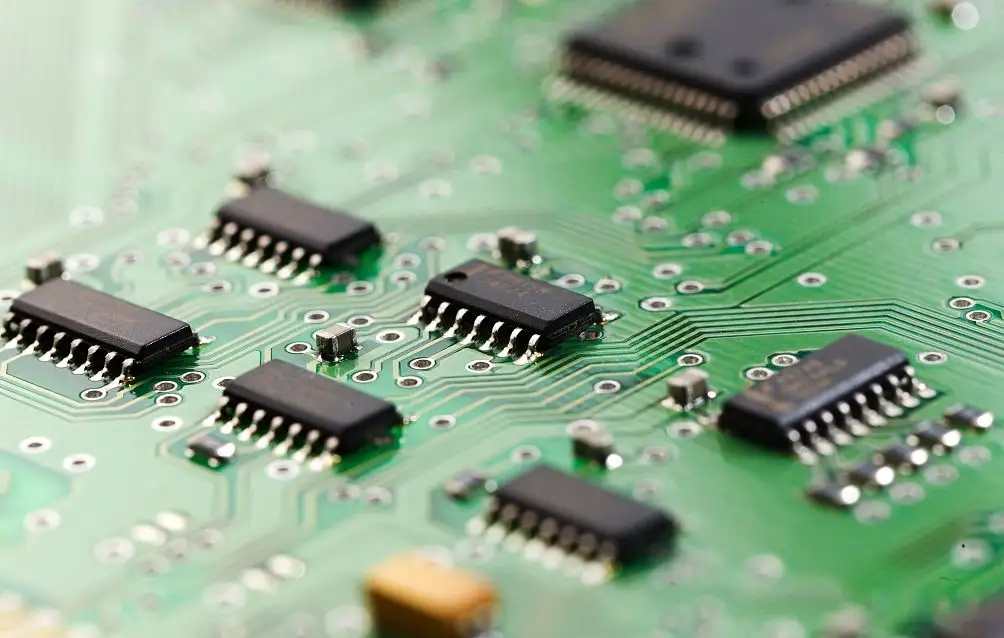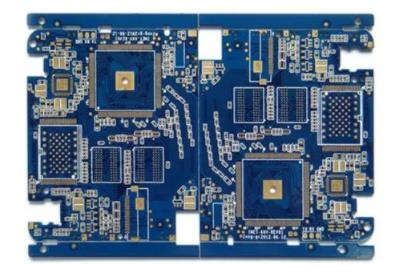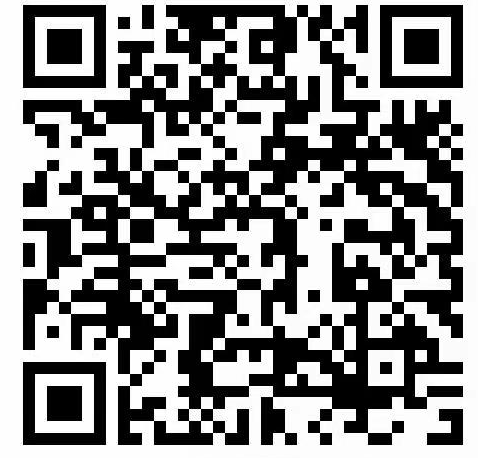
Acquisition and ApplICation of Electromagnetic Information on PCB
Traditional debugging tools PCB board includes: time domain oscilloscope, TDR (time domain reflectometry) oscilloscopes, logic analyzer, frequency spectrum analyzer, etc, But none of these methods can reflect PCB data PCB (also calLED printed circuit board) or PWB (printed wiring board) is cut into a certain size with insulating board as the base material, at least with A conductive pattern with holes (such as component holes) ) is used to replace the chassis of the previous electronIC components and realize the interconnection between electronic components. Because these circuit boards are made by electronic printing technology, they are called "printed" circuit boards It is inaccurate to refer to "printed circuit board" as "printed circuit board" because there is no "printed element" on the printed circuit board, but only for wiring The Emscan EMC scanning system uses advanced array antenna technology and electronic switch technology to measure PCB current at high speed The key of Emscan is to measure the near-field radiation of the working PCB placed on the scanner using an array antenna The antenna array consists of 4.0 x 3.2. (1280) SMAll H-field probes embedded in an 8-layer circuit board with a protective layer to accommodate the PCB under test. The results of spectrum scanning can give us a general idea of the spectrum generated by the EUT: how many frequency components are there, and what the amplitude of each frequency component is
PCB board

Full frequency scan
The design of the PCB is based on the circuit schematic diagram to realize the functions required by the circuit designer PCB design mainly refers to layout design, which needs to consider various factors, such as the layout of external connections, the optimal layout of internal electronic components, the optimal layout of metal connectors and through holes, electromagnetic protection, and heat dissipation Layout design can save production cost and achieve good circuit efficiency and heat dissipation efficiency SIMple layout design can be realized manually, while complex layout design needs to be realized through computer aided design When performing spectral analysis/spatial scanning function, place the working PCB on the scanner. The PCB is divided into seven. 6mm * 7.6mm grids by the scanner grid (each grid contains an H-field probe), execute After scanning the full frequency range of each probe (the frequency range can be from 10kHz to 3GHz). At last, EMIscan gives two images, which are the synthetic spectral map and the synthetic spatial map Phantom like/spatial scanning obtains all spectral data of each probe in the entire scanning area
Quickly locate sources of electromagnetic interference
Spectrum analyzer is an instrument for studying the spectral structure of electrical signals. It is used to measure signal parameters, such as signal distortion, modulation, spectral purity, frequency stability and intermodulation distortion It can be used to measure some parts of the circuit system, such as amplifiers and filters Parameter is a multi-purpose electronic measuring instrument It can also be called frequency domain oscilloscope, tracking oscilloscope, analytical oscilloscope, harmonic analyzer, frequency characteristic analyzer or Fourier analyzer Modern spectrum analyzer can display the analysis results in analog or digital form, and can analyze electrical signals in all RF bands, from extremely low frequency below 1 Hz to submillimeter frequency The "interference source" can also be located by using a spectrum analyzer and a single near-field probe The "fire suppression" method is used here as an analogy The far-field test (EMC standard test) can be compared to "detecting fire". If any frequency point exceeds the limit value, it is considered as "fire detection" The traditional "spectrum analyzer + single probe" solution is generally used by EMI engineers to detect "where the flames come out of the chassis". The interior of the product is covered with "flame" EMSCAN allows us to detect the source of the interference source - "tinder". We can also see "fire", that is, the transmission path of the interference source
The general method is as follows: quickly locate the electromagnetic interference source
(1) Check the spatial distribution of the fundamental wave and find the physical location of the amplitude on the spatial distribution map of the fundamental wave For broadband interference, specify a frequency in the middle of the broadband interference (for example, 60MHz - 80MHz broadband interference, we can specify 70MHz), check the spatial distribution of frequency points, and find the physical location of amplitude
(2) Specify the position and see the spectrogram of the position. Check whether the amplitude of a single harmonic point at this position is consistent with the total spectrum If they coincide, it means that the designated position is the strong position of these interferences It is used for broadband interference. Check whether this position is the whole broadband interference position
(3) In many cases, not all harmonics are generated at one location. Sometimes even harmonics and odd harmonics are generated at different locations, and each harmonic component may also be generated at different locations In this case, the location of strong radiation can be found by checking the spatial distribution of the frequency points concerned
(4) Taking measures in places with strong radiation is unexpectedly effective to solve EMI/EMC problems
This EMI troubleshooting method can truly track the "source" and propagation path, allowing engineers to eliminate electromagnetic interference problems at low cost and quickly In the actual measurement of communication equipment, the radiated interference from telephone cable After using EMSCAN for the above tracking and scanning, several filter capacitors are installed on the processor board to solve the electromagnetic interference problem that engineers cannot solve
Quickly locate circuit fault location
As the complexity of the PCB increases, so is the difficulty and workload of debugging With an oscilloscope or logic analyzer, only one or a limited number of signal lines can be observed at the same time However, there may be thousands of signal lines on a PCB engineers can only find problems by experience or luck Question If we have the "complete electromagnetic information" of the normal board and the faulty board, we can find the abnormal spectrum by comparing the data of the two boards, and then use the "interference source location technology" to find the location of the abnormal spectrum Find the location and cause of the fault Then find the location of the "abnormal spectrum" on the spatial distribution map of the fault board, as shown in Figure 6 The fault location is located on a grid (7.6mm * 7.6mm) The diagnosis will be made soon
Applications for Assessing PCB Design Quality
A good PCB needs to be carefully designed by engineers, and the issues to be considered include:
(1) Reasonable stacking design: especially the arrangement of the ground plane and the power plane, as well as the design of the layer where the sensitive signal line and the signal line that generates a lot of radiation are located There are also ground plane division, power plane, and cross partition signal wiring
(2) Keep the signal line impedance as continuous as possible: as few vias as possible; as few right-angle traces as possible; And as small a current return area as possible
(3) Good power supply filtering: Reasonable type. The placement of capacitors, quantities, and filter capacitors, as well as the Reasonable stacking arrangement of ground plane and power plane, can ensure that electromagnetic interference is controlled in the smallest possible area
(4) Ensure the integrity of the ground plane as much as possible: as few vias as possible; reasonable safety spacing of vias; reasonable device layout; reasonable arrangement of vias to ensure the integrity of the ground plane. On the contrary, dense vias, excessive safe vias spacing, or unreasonable equipment layout will seriously affect the integrity of the ground plane and power plane, resulting in a lot of induced crosstalk, common mode radiation, and making the circuit more sensitive to external interference
(5) Find a complexity between signal integrity and electromagnetic compatibility: On the premise of ensuring the normal function of the equipment, increase the rising edge and falling edge time of the signal as much as possible, and reduce the harmonic amplitude and quantity of electromagnetic radiation generated by the signal For example, it is necessary to select a suitable damping resistor, a suitable filter pipe, etc In the past, using the complete electromagnetic field information generated by PCB can scientifically evaluate the quality of PCB design Using the complete electromagnetic information of PCB, the design quality of PCB can be evaluated from the following four aspects: 1. The number of frequency points: the number of harmonics 2. Transient interference: unstable electromagnetic interference 3. Radiation intensity: the magnitude of electromagnetic interference at each frequency point 4. Distribution area: the size of EMI distribution area of each frequency point on PCB
Summary of this article
The complete electromagnetic information of PCBallows us to have a very intelligent understanding of the overall PCB
然后
联系
电话热线
13410863085Q Q

微信

- 邮箱











